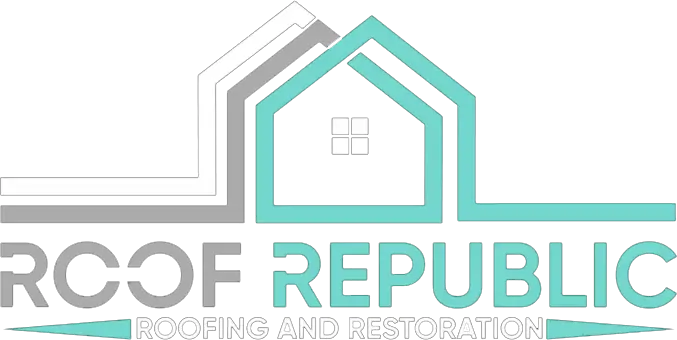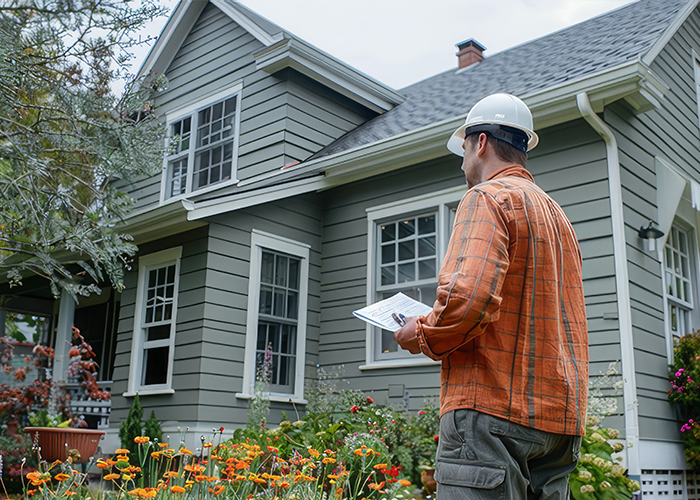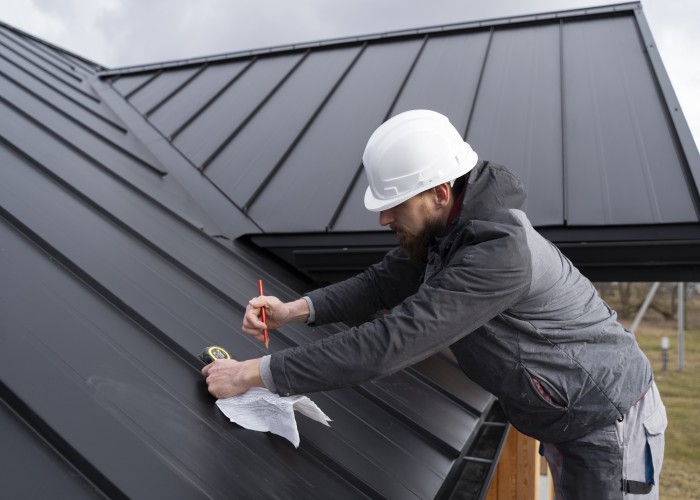Get a Public Adjuster: How Houston Roof Claims Work
By Shantell Moya · 5 months ago · 14 min read

A brown ring creeps across the living room ceiling, and suddenly, you’re juggling buckets, contractors, and a stack of insurance forms thicker than last month’s magazine haul. You can tell immediately the leak is a major problem. Most homeowners I talk to sign the first estimate just to make the headache go away, then end up seeing that half the roof still leaks after the crew packs up. This situation happens not because homeowners are careless – it’s very difficult to question line items when every line seems written in confusing policy language.
This exact situation makes you need a translator as much as a roofer. When you take time to review the paperwork with fresh eyes, you typically find exclusions, depreciation clauses, or upgrade credits you might completely miss when you’re still cleaning up water damage. Understanding how each step should happen puts you in control instead of just reacting to every email your insurance company sends your way.
Public adjusters can change everything. These licensed experts work exclusively for your benefit, carefully tracking the storm’s damage shingle by shingle and slowing the process down when your insurer tries to rush through the estimate. Lots of homeowners in Houston have seen how fast hail can tear through asphalt in just ten minutes, and this makes a detailed inspection absolutely necessary. Adjusters arrive with moisture meters, drone photos, and, most critically, expertise about insurance terms. They change phrases like “wind-driven water intrusion” into enough money to replace sheathing, flashing, and gutters instead of just covering a single patch no bigger than a dinner plate.
We have an in-house adjuster and work with these types of cases all the time. Working with a public adjuster doesn’t mean starting a conflict with your insurance company – it just evens the playing field.
Let’s talk about how to make sure your roof gets paid for and your roof gets the care it deserves!
What Is A Public Adjuster?
Insurance providers send their own adjusters – people paid to guard the carrier’s bottom line, not yours. Most Houston homeowners don’t understand this conflict until the conversation turns technical and the allegiance is buried in confusing language.
A public adjuster changes the equation. Licensed under Texas Insurance Code Chapter 4102, these experts answer to a single constituency – you. There’s no delicate balancing act, no silent loyalty to the carrier – just a roof-savvy advocate who can translate policy language into money that should land in your pocket.
The difference shows on the ladder. Company adjusters usually breeze across a hail-pocked roof in minutes, clipboard already poised for the next address. A public adjuster takes their time. Chalk marks bloom around every damage point, photos catalog creases the eye normally skips, and a file thick enough to stand against an underwriter’s microscope starts taking shape. That detailed record is why, after Hurricane Harvey, homeowners who brought in public adjusters routinely saw settlements jump 30 to 40 percent over the insurer’s first estimate.
Contingency pricing makes the incentives clean. In Texas, the fee is capped at ten percent of the final check, payable only after the money arrives. No retainer, no hourly fees – just a partner whose earnings grow only when yours do.
So when the next Gulf storm strips shingles and an insurer’s representative is tapping the roof with one eye on the clock, you can call someone else – a set of eyes that answer only to you. That single choice can turn a rushed inspection into a completely funded repair and replace isolation with confidence.
How To Start Your Houston Roof Claim?
A Gulf storm can do more than soak the lawn – it can leave questions hanging over your head – literally. Before those questions turn into ceiling stains, take a walk around your house with your phone and stay alert. You should photograph anything that looks out of place – a shingle curled like a leaf, a dent the size of a quarter, a water track under the eaves. In a few weeks, the specifics might slip from your memory. But your camera roll captures everything, and those photos can save you from disagreements down the road.
With your photos safely stored, dig out that insurance policy you filed away years ago and hardly ever look at. Don’t just skim through it. You need to examine each paragraph as carefully as you checked your roof, specifically looking for phrases about wind, hail, and “acts of God.” Hidden exclusions can turn what seems like a guaranteed claim into a tough battle. Most insurance providers set tight deadlines for reporting damage. In Texas, hail claims come with a 90-day time limit that begins right after the storm passes. Understanding your deadline gives you room to get ready without rushing.
Make that call to your insurer next – even if you have all of the answers yet. Starting the claim establishes a timeline, and the adjuster won’t show up until you book an appointment. When that day comes, try to be home. Walk around your property again – this time with your professional visitor – and connect each photo to what you’re looking at together. You’re not being picky – you’re making sure nothing important gets missed.
The first settlement figure may look generous when you see it. But remember who calculated that number. If the amount doesn’t feel right – or if you want a second opinion – contact a public adjuster. These experts work only for you. They interpret damage the way a translator understands nuance and can tell when a missing valley shingle might point to bigger problems. Sometimes, just talking with them reveals thousands in extra compensation – other times, their full representation changes an inadequate deal into a roof rebuilt to the right standards. Either way, you exchange uncertainty for professional knowledge that pays off handsomely after any storm.
How A Public Adjuster Helps Your Claim
When your insurance carrier presents you with their first number for your Houston roof, you might think it’s final and unchangeable. But that’s not the case. A public adjuster joins the conversation on your behalf and works with the same policy language and pricing software as the insurer but with your interests as the priority. The entire process starts with looking at your roof and extends completely into the paperwork itself.
A detailed field inspection creates the foundation for your claim. Your adjusters physically walk across your roof, use drones to get overhead views, and run thermal scans in areas sunlight doesn’t reach. They document moisture trapped behind decking, cracks along flashing, and loosened fasteners. Every issue gets recorded because any damage that goes unnoticed now turns into money out of your pocket later.
Once back in the office, your adjuster enters the data into the same estimating programs insurance carriers use. The list of necessary repairs grows – underlayment, flashing, ridge vents, and labor costs for deck removal. With your adjuster handling the paperwork, nothing gets labeled as “optional” and quietly excluded. A single extra item in that software might mean another week of temporary housing covered for your family while repairs happen. You’ll understand the value when you stop receiving endless follow-up calls from your insurer.
Houston residents learned this reality the hard way after the 2020 hurricane season. Lots of roofs looked fine when viewed from street level, which led homeowners to accept minimal settlements and sign release forms. Within months, those same homeowners found warped rafters, spreading leaks and repair costs that had doubled. While this was happening, families who worked with public adjusters from the beginning had their decking and insulation replaced correctly, with costs completely covered. Their homes remained protected when the next storm system moved across the Gulf.
The negotiation process continues well past receiving a revised estimate. While insurance firms answer to their shareholders and state regulators, you have to manage deadlines, contractors, and your normal life. Your adjuster maintains momentum on your claim by handling phone calls, pursuing signatures, and meeting insurance company deadlines. This means you won’t be trying to understand confusing insurance terms late at night. You stay in control of all decisions but with straightforward summaries instead of mountains of paperwork.
Working with a public adjuster gives you a stronger position – you gain an expert checking your roof, someone who speaks the insurance language fluently, and extra time to concentrate on living in your home instead of repairing it.
That’s just the balance a public adjuster helps restore in your life.
How To Pick A Public Adjuster
Looking for a public adjuster to manage your Houston roof claim is like finding a trustworthy mechanic after a car accident – you need someone you can rely on when you’re in a tough situation. The right professional can make a significant difference in your claim outcome. Check the simplest qualification – visit the Texas Department of Insurance website to verify the adjuster’s license. Unlicensed operators disappear the instant complications come up.
After you’ve confirmed their credentials, take time to look into what previous clients have experienced. Google reviews, BBB ratings, and community forums each show different parts of an adjuster’s track record. Remember that a single negative review isn’t necessarily a dealbreaker – what matters more is when you see patterns of complaints appearing repeatedly. These patterns should guide the questions you need to ask in your conversations with possible adjusters.
When you meet for an interview, watch what the adjuster steers away from in conversation. An independent public adjuster works exclusively for you, not the insurance company. If your question about who pays them results in vague talk about connections or preferred vendors, continue your search elsewhere. Real independence means your roof damage remains the priority, not hidden arrangements that might compromise your claim.
Next, examine the contract. Texas law says they need to use either the state’s standard agreement form or a version approved by regulators, so compare the written document against any verbal commitments made during your discussions. Review cancellation terms, the exact services they’ll provide, and how they structure their fees. A proper agreement should be straightforward, written in plain language, and leave no room for misinterpretation later.
The fee structure usually comes as a percentage of your settlement – ranging from five to fifteen percent during normal circumstances, with a ten percent maximum during governor-declared disasters. Understand the exact percentage they charge and ask what happens if your insurance company delays payment.
When you choose an adjuster who meets these standards, you’ll enter negotiations with a real advocate – someone with the expertise to fight for every dollar your policy entitles you to receive. This sense of confidence makes all your research worthwhile.
What Other Claim Options Do You Have?
When shingles scatter across your yard, and your insurer asks for photos, you suddenly turn into a project manager, negotiator, and accountant all at once. Some homeowners manage the claim themselves – they take the pictures, gather bids, and meet the carrier’s adjuster right on their driveway. That creates a clean path without extra fees that makes sense when damage can be seen immediately, and the policy language remains straightforward. Just remember that you’re entering an arena insurance teams navigate every day – their confidence isn’t arrogance; it’s just muscle memory. You can balance the conversation well by matching their preparation with thorough estimates and creating a solid paper trail of documentation.
Taking a detour toward legal counsel makes sense when your file begins accumulating denials or partial payments. Roof-claim attorneys throughout Houston usually charge between $200-$400 per hour, or they might take a percentage of your settlement instead. The cost hurts, so you should compare it against your possible shortfall – for a modest hail repair job, legal fees might eat up the very dollars you’re trying to recover. Do the calculations closely before reaching for the phone to call an attorney.
Formal litigation isn’t your only option when negotiations stall. Mediation puts a neutral third party between you and the insurance carrier and can help restart stalled negotiations in just one afternoon. This way moves faster, stays quieter, and costs much less than a courtroom battle but still carries the force of a binding agreement. When valuation alone causes the dispute, the appraisal clause found in most policies gives you a different path. Each side hires an appraiser, the pair selects an umpire, and together, the three agree on a number. You skip depositions and judges – everything centers on figuring out the dollars and damage.
Never forget about the experts who spend their workdays on rooftops. Reliable contractors now combine free inspections with claim support. These experts will document every mark on your shingles and, when requested, speak directly with your carrier. Their expertise won’t replace your own choice-making authority. Their knowledge can cut down your paperwork burden and help calm your nerves while your claim progresses toward resolution.
A Secure Home Starts with a Solid Roof
When you deal with an insurance claim, it puts you in a tough situation – you’re juggling paperwork, deadlines, and company procedures while staring at damage to your home. The learning curve feels a bit tough because that’s what it is. Insurance adjusters work with these situations every week, and you might experience just one claim in your lifetime, which is why having someone experienced at your side can tip the odds in your favor and help quiet the worrying thoughts running through your head.
Say you consider the real money at stake in these situations. Roof repairs can reach $10,000 or more, and the exact fine print in your policy affects if that bill lands in your lap or gets covered by the insurance company. When you work with a licensed public adjuster, you have someone who speaks the same technical language as insurers, who keeps track of necessary submission deadlines and documents your damage just how underwriters want to see it. This way of doing things usually results in better settlements and less time spent waiting on hold during frustrating phone calls. Most homeowners who eventually hire an adjuster later admit they wish they had done so from the beginning.
Preparation will always give you better results than scrambling to respond after damage happens. Before the next storm shows up on Houston’s radar, take out your insurance policy and review it closely with a highlighter in hand. Your deductibles, particular provisions for wind or hail damage, and how the company calculates depreciation will affect your final payment amount long before the first roof blows away. The Texas Department of Insurance offers easy-to-understand guides on their website – spending just ten quiet minutes looking over these resources could save you hours of stress after a storm hits.
Your roof protects everything you own from Gulf Coast weather, so it deserves the same attention you give to your air conditioning system or your vehicle. Small leaks can develop into big problems like damaged drywall, warped flooring, and mold – costs that grow substantially after storms pass. When you spot problems early, you protect your family’s comfort and build a stronger case for any future claims by maintaining dated photos and service records.
That’s where we come in to help you. Roof Republic consists of a Houston-based team specializing exclusively in commercial and residential roofing made for our specific climate. Having local crews means you’ll get faster inspections, materials correctly selected for Gulf humidity, and paperwork customized for Texas insurance carriers. If you need a complete assessment after a storm or want reassurance about your roof’s condition, our free inspection takes care of your concerns. We work to make your roof sturdy enough for whatever weather the next season brings – contact us, and we’ll take care of everything from there.










Comments
Sort by: